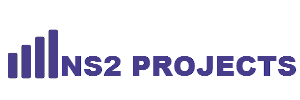- (0)
- 18
Nov Author : NS2 Projects Category : IEEE NS2 PROJECTS
Tags : 2015 Ns2 Projects, Network simulator2 Projects, Ns2 Projects
The emergence of self-driving vehicles holds great promise for the future of transportation. While it will still be a number of years before fully self-driving vehicles can safely and legally drive unoccupied on U.S. streets, once this is possible, a new transportation mode for personal travel looks set to arrive. This new mode is the shared autonomous vehicle (SAV), combining features of short-term on-demand rentals with self-driving capabilities. This presentation seeks to demonstrate how SAVs’ potential may be assessed through agent-based modeling, as applied in Austin, TX. The framework sheds SAVs’ current speed limitations established in early pilot SAV demonstrations by CityMobil2 and Google. A 12-mile by 24-mile regional geofence is employed to limit service within Austin to the areas with the greatest demand intensity. The simulation uses a sample of trips from the region’s planning model to generate demand across traffic analysis zones and a 32,272-link network. Trips call on the vehicles in 5-minute departure time windows, with link-level travel times varying by hour of day based on MATSim’s dynamic traffic assignment simulation software.A sizable degree of market share is assumed, though not market dominance, with adoption levels ranging from 2.3-11.1 percent of regional personal trip-making within the geofenced area. This simulation work also assumes that individual travelers may share rides through dynamic ride-sharing (DRS), which may pool two or more travelers with similar origins, destinations and departure times in the same vehicle. The presentation focuses on problem formulation and solution implementation details regarding SAV-traveler assignment, unoccupied vehicle relocation, and dynamic ridesharing. Model objectives in these problems seek to balance competing goals of minimalized total miles driven, as well as minimalized traveler wait (particularly long waits) and in-vehicle travel times.
Multiple scenario variations are also tested, as – ell as a fleet size optimization procedure that seeks to maximize return on investment by a private operator. Results show that each SAV is able to replace around 10 conventional vehicles within the 24 mi × 12 mi area while still maintaining a reasonable level of service (as proxied by user wait times, which average just 1.0 minutes), though up to 8 percent more vehicle-miles traveled (VMT) may be generated if DRS is not utilized, due to SAVs journeying unoccupied to the next traveler, or relocating to a more favorable position in anticipation of next-period demand. Simulation results also indicate that DRS reduces total service times (wait times plus in-vehicle travel times) and travel costs for SAV users, even after accounting for extra passenger pick-ups, drop-offs and non-direct routings. While the base-case scenario (serving 56,324 person-trips per day, on average) showed that a fleet of SAVs allowing for DRS may result in vehicle-miles traveled that exceed person-trip miles demanded (due to anticipatory relocations of empty vehicles, between trip calls), it is possible to reduce overall VMT as trip-making intensity (SAV membership) rises and/or DRS users become more flexible in their trip timing and routing. Finally, these simulation results suggest that a private fleet operator paying $70,000 per new SAV could earn a 19% annual (long-term) return on investment while offering SAV services at $1.00 per mile of a non-shared trip (which is less than a third of Austin’s average taxi cab fares).
